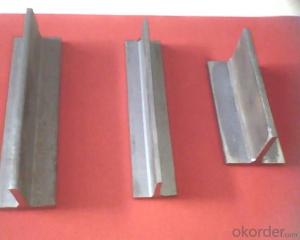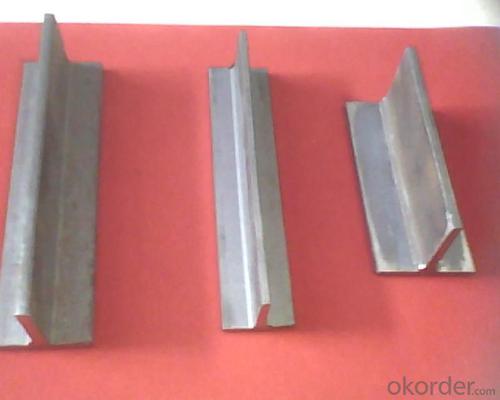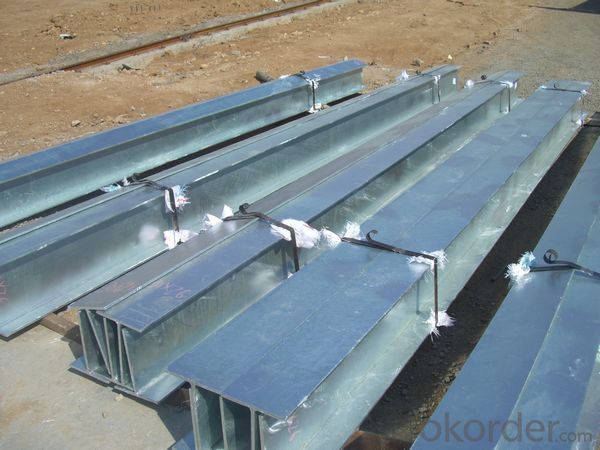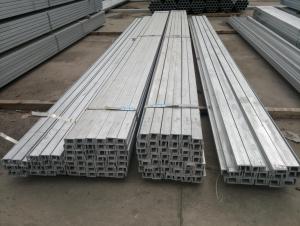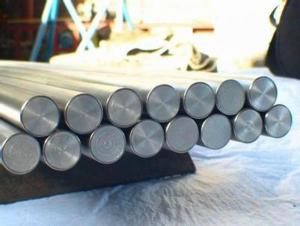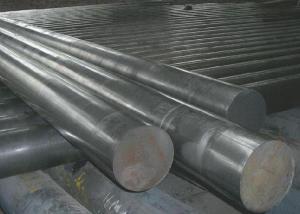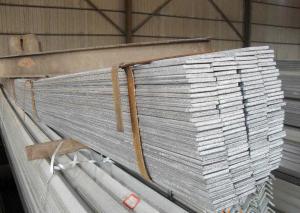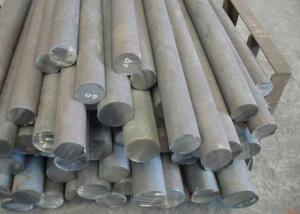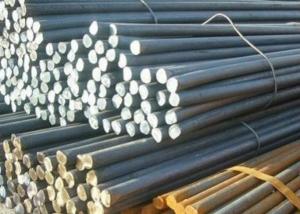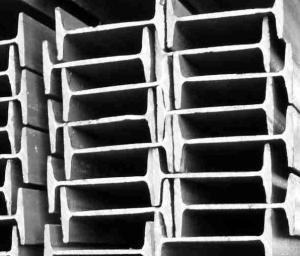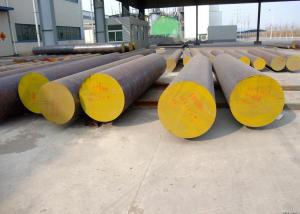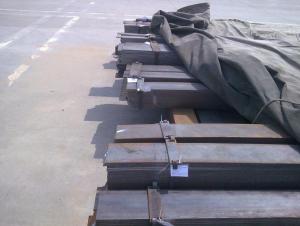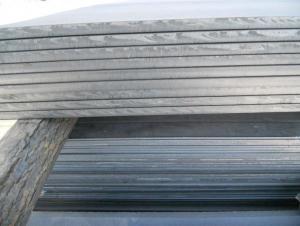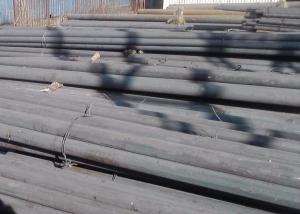Galvanized Steel T Form Bar Zinc Coating for Various Uses
- Loading Port:
- China main port
- Payment Terms:
- TT or LC
- Min Order Qty:
- 25 m.t.
- Supply Capability:
- 10000 m.t./month
OKorder Service Pledge
OKorder Financial Service
You Might Also Like
1. Structure of Galvanized Steel T Form Bar Zinc Coating Description:
Galvanized steel T form bar zinc coating is a beam with an I-shaped cross-section. The horizontal elements of the "I" are known as flanges, while the vertical element is termed the "web". Galvanized steel T form bar zinc coating is usually made of structural steel and is used in construction and civil engineering. The galvanized steel T form bar zinc coating resists shear forces, while the flanges resist most of the bending moment experienced by the beam. Galvanized steel T form bar zinc coating theory shows that the I-shaped section is a very efficient form for carrying both bending and shears loads in the plane of the web.
2. Main Features of Galvanized Steel T Form Bar Zinc Coating:
• Grade: Q235
• Type: Mild carbon steel
• Deflection: The stiffness of the I-beam will be chosen to minimize deformation
• Vibration: The stiffness and mass are chosen to prevent unacceptable vibrations, particularly in settings sensitive to vibrations, such as offices and libraries.
• Local yield: Caused by concentrated loads, such as at the beam's point of support.
3. Galvanized Steel T Form Bar Zinc Coating Images:
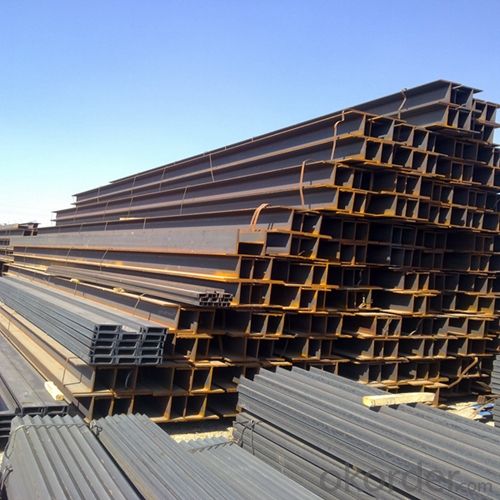
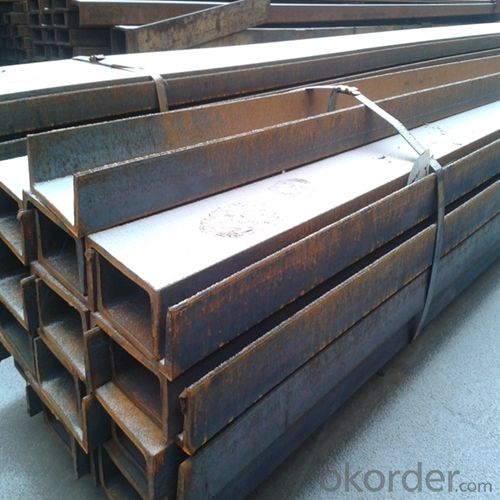
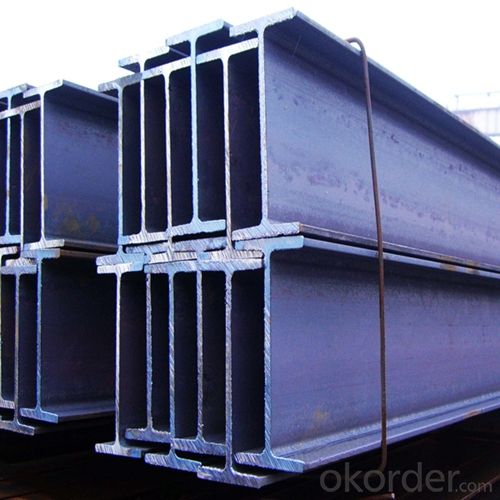
4. Galvanized Steel T Form Bar Zinc Coating Specification:
Alloy No | Grade | Element(%) | ||||
C
| Mn
| S
| P
| Si
| ||
Q235
|
B
|
0.12—0.20 |
0.3—0.7 |
≤0.045 |
≤0.045
|
≤0.3
|
Alloy No | Grade | Yielding strength point(Mpa) | Tensile strength (Mpa) | Elongation after fracture(%) | ||||||
Thickness (mm) | Thickness (mm) | |||||||||
≤16 | >16--40 | >40--60 | >60--100 | ≤16 | >16--40 | >40--60 | >60--100 | |||
≥ | ≥ | |||||||||
Q235 |
B |
235 |
225 |
215 |
205 |
375--500 |
26 |
25 |
24 |
23 |
5. FAQ
We have organized several common questions for our clients,may help you sincerely:
①Is this product same as W beam?
In the United States, the most commonly mentioned I-beam is the wide-flange (W) shape. These beams have flanges in which the planes are nearly parallel. Other I-beams include American Standard (designated S) shapes, in which flange surfaces are not parallel, and H-piles (designated HP), which are typically used as pile foundations. Wide-flange shapes are available in grade ASTM A992,[4] which has generally replaced the older ASTM grades A572 and A36.
②How to inspect the quality?
We have a professional inspection group which belongs to our company. We resolutely put an end to unqualified products flowing into the market. At the same time, we will provide necessary follow-up service assurance.
③Is there any advantage about this kind of product?
Steel I beam bar IPE has a reduced capacity in the transverse direction, and is also inefficient in carrying torsion, for which hollow structural sections are often preferred.
- Q: What does "M" mean?
- The former refers to the steel, round steel, flat steel, angle steel, six angle steel; the latter refers to the I-beam, channel steel, steel, steel, steel frame bending etc..
- Q: Does the profile include H?
- Profiles include section H steelThe online quote H steel and profiles in the angle of groove separate quotation, mainly because H steel has great use compared with the other, and the demand is relatively more, but in some cases, and H type steel I-beam can also substitute for each other.
- Q: What does "BH" mean?
- BH is welded to H just, and RH is hot rolled H steel.
- Q: Elastic modulus of section steel
- The elastic modulus of steel is 2.1 * 10^7N/cm L.
- Q: What kind of steel is used in steel columns?
- Compared with other steel piles, steel pipe piles have their own advantages in many aspects, such as long joint welding, single pile bearing capacity, bending rigidity and penetration ability.
- Q: What is special steel?
- Plough steelUsed in the manufacture of general purpose plow, plows, shallow tillage implements main plough and ordinary before plow ploughshare, general wear and has sufficient strength and toughness of the steel. China's general use of 65Mn and 65SiMnXt steel. In addition, often make tools steel and special steel shape. Such as T steel, Z steel, arc type steel, double reinforcing steel, strengthen the font, grass blade steel, flat steel and steel rod concave lines. The cold-formed steel: cold-formed steel is the main material for the production of light steel structure, made of steel or steel roll forming. It not only the wall thickness can be made very thin, but also greatly simplifies the production process, improve production efficiency, can be produced using the general method to produce uniform wall thickness and complex cross sections of various shapes and different materials of cold-formed steel cold-formed steel. Except for the building structure, but also widely used In vehicle manufacturing, agricultural machinery and so on. A lot of cold-formed steel varieties, according to the opening section, semi closed, closed. According to the shape of a cold roll, angle steel, Z steel, square tube, rectangular tube, special pipe, shutter door according to the provisions of GB6725-92, cold-formed steel with ordinary carbon negative structure and quality carbon steel, low alloy steel plate or strip made of cold-formed structure
- Q: Can the section steel butt joint in the end?
- Bolt connection also requires lining plate, pay attention to bolt size, quantity and spacing. To calculate whether thin-walled steel itself will be crushing, the solution is solder paste board, and bolt holes. The principle is that the strength of the butt joint is not weaker than that of other parts, and there is no greater stress.
- Q: What are the common types of profiled steel?
- Section steel is divided into two types: simple section steel and complex section steel.Simple section steel: steel, wire rod, square steel, flat steel, six angle steel, triangular, elliptical steel, steel arch steel, etc..
- Q: How to distinguish cold formed section steel and hot rolled section steel?
- The difference between cold-formed steel and welded steel tubes is that welded steel pipes are mainly used for conveying fluids, such as gas and tap water. Petroleum, liquefied petroleum gas, steam, etc. The steel tube is subjected to a certain amount of pressure, while the cold-formed steel is used to make the structure. Under the action of external force, the cold-formed steel is required for the section, shape, size and mechanical properties of the section steel.
Send your message to us
Galvanized Steel T Form Bar Zinc Coating for Various Uses
- Loading Port:
- China main port
- Payment Terms:
- TT or LC
- Min Order Qty:
- 25 m.t.
- Supply Capability:
- 10000 m.t./month
OKorder Service Pledge
OKorder Financial Service
Similar products
Hot products
Hot Searches
Related keywords
